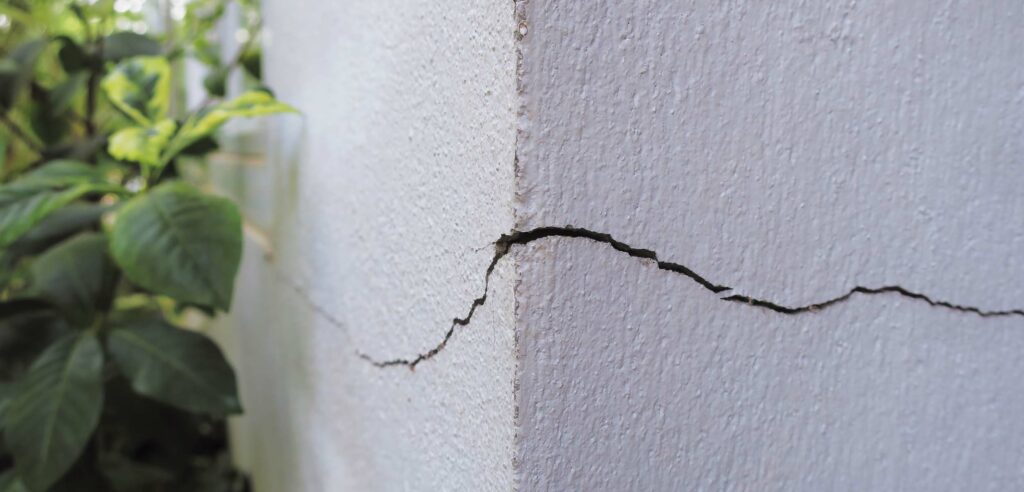Spring is upon us, and it’s time to get the camping gear ready, fire up the barbecue, and…pest proof my home? While it’s not the most fun you’ll have this season, it‘s an important step to keeping your home clean and comfortable this spring. While we’re excited about the warming weather, so are bugs and rodents!
Get the jump on those nasty critters this year by checking a few areas of your property. The habit of keeping your household clean will also help stave off pests. Let’s discuss what else you can do to protect your home from pests once spring begins.
Inspect Your Exterior for Weak Points
Bugs and other invaders need an entry point into your home. And it doesn’t take much space for tiny pests like ants and cockroaches. So make sure to give your entire home the once-over as soon as the warm weather arrives.

Foundation Cracks
A crack in your home’s foundation is an unassuming way for bugs and critters to find their way in. Whether you have a basement or not, cracks form as your house’s foundation settles over time. This creates (sometimes huge) spaces in the concrete that you may not even be aware of.
Since insects and other pests don’t need a huge gap to enter your home, sealing these cracks will help prevent them from entering. Inspect the exterior of your foundation and the basement (if applicable) for any cracks or damage.
Foundation cracks can be sealed using an elastomeric sealant or a hydraulic concrete cap. Both of which can be found at your local hardware store.

Holes in Siding & Walls
Weather, human activity, and normal wear and tear lead to nicks and scrapes on your siding over time. Although it’s mostly an aesthetic problem, there are cases when small abrasions can lead to openings in your siding system. For certain pests, like termites, this means clear access to the wood framing of your home.
It’s well worth inspecting your siding, soffit, and fascia for any spaces where pests might enter. Holes can be sealed with exterior waterproof caulking. Consider replacing damaged or missing siding.

Windows & Doors
When spring arrives, you’ll be tempted to keep doors and windows open to let the fresh air in. Of course, install screen coverings if your area is prone to mosquitos, wasps, or other flying pests. Check screens for tears and holes and ensure these are repaired or replaced before the warm weather peaks.
Check your doors and windows for any cracks and gaps in and around the frames. These are easy points of entry for small insects and rodents. Ensure all weather-stripping is intact and functional and replace broken or missing pieces.

Wall Penetrations
Gaps around wall penetrations, like electrical conduits or gas and water lines, provide easy access to your interior for all kinds of pests. Even if you know these gaps have been sealed previously, check to make sure the sealant or spray foam is holding up. Don’t forget about your AC entry!
Sealants dry and crack over time, and spray foam deteriorates with exposure to UV light. For Central Valley homeowners, these exterior wall penetrations should be checked each spring to help control pest problems.
Pest-Proof Yard Maintenance
Just because pests are outside your home doesn’t mean they won’t be a problem. Outdoor areas can serve as breeding grounds for unwanted pests. Think of your lawn and garden as your first line of defense when it comes to pest proofing your home for spring.

Dense Grass & Weeds are Ideal for Pests
Small rodents and insects are attracted to long grass and overgrowth in your yard. This coverage gives them protection from predators like birds and bats. But this means pests are seeking shelter right outside your home!
Cut your grass regularly and remove overgrowth in flower beds and vegetable gardens. A classic outdoor spring cleaning is always recommended to help pest proof your property. Keeping a neat yard will force pests to find cover elsewhere.

Pooling Water
Almost any pest you can think of is attracted to standing water. Still water serves as a watering hole for visitors you don’t want. These mini-pools can become literal breeding grounds for mosquitoes and make your yard a living nightmare!
Consider some of the places where water can pool in your yard:
- Dishes & bowls
- Toys
- Storage Containers
- Patio Furniture
- Clogged Gutters
Ensure that your downspouts are directing water away from your house. A bird bath is great for attracting natural predators that can help control pests. However, stagnant bird bath water will work against you, so change the water frequently.
If your lawn isn’t sloped correctly, you may encounter standing water pooling in your grass. A pest control expert can help you determine if landscaping is necessary to properly pest proof your property.

Garbage Disposal & Storage
Pests are scavengers, and they are looking for food, water, and shelter. Bags of garbage, empty beverage containers, and recyclable food containers provide all these things for bugs and rodents. Keep trash and recyclables as far away from your house as possible in tight-lidded bins.
Composting is a great environmental practice and a good way to dispose of organic waste. But a compost pile is very attractive to most pests. It’s like a buffet for nasty critters! If you have a composting system, keep it as distant as possible from your house.
Make sure to dispose of food containers and other trash after use. Leaving used dishes or empty beverage bottles on your patio table will also attract the bugs you don’t want around.
Consider adding a garbage disposal pad to your backyard if pests are frequenting your trash area. This concrete layer adds a little protection between a food supply and the soft, warm ground where pests like to roam.
Don’t Let Your Interior Become a Pest Paradise
Pests want to enter your home because it’s (probably) a comfortable temperature and there’s (probably) food to be found. While we’re not asking you to turn off the AC, there are some simple things you can do inside to pest proof your home for spring.

Dispose of Garbage Often
Your kitchen garbage offers a full a la carte menu for cockroaches, flies, and ants! Empty your kitchen trash cans at least every other day in the spring and summer. Garbage containers with tightly fitting lids are ideal, as they limit appealing smells and prevent entry into the trash can. Many pests can smell garbage (particularly food-related waste) from a distance.

Keep Surfaces Clean & Clear
Surfaces where you prepare or eat food accumulate lots of debris, providing an easy meal for pests. Tables and countertops should be wiped frequently and after any use. If you prefer keeping certain foods on the counter, like fruit, vegetables, and butter, it’s not helping your pest problem. Instead, keep these items in tightly sealed containers or your refrigerator.
Food debris always finds its way to the ground. Regularly mopping and vacuuming will make your floors unattractive to pests. For more kitchen pest-proofing ideas, read here.

Keep Food in Dining Areas
Sometimes we all enjoy a meal away from the table. This might be in front of the TV, at your desk, or even in bed. But remember, the more places you take your food, the more places crumbs can fall on the ground and other surfaces. Any food source is a beacon for pests, and rooms where you’re meant to relax are the last place you want an infestation!
If you’re really trying to pest proof your home, do your best to limit mealtimes and snacks to one room. Keeping one area clear of food debris is much easier than an entire house.

Springtime Pest Proofing FAQs
There are a lot of wasps around my house, and I think there may be one or more nests. What should I do?
Some DIY solutions can provide relief from unwanted wasps sharing your home. Homemade and store-bought traps can effectively eradicate a smaller population of wasps or hornets. You can also use a combination of clove, geranium, and lemongrass essential oils to repel wasps from possible nesting areas.
Check out this article for wasp-related pest prevention tips!
How do I prevent ant infestations?
Ants are looking for easy access to food and water. Keeping your surfaces clean and your food in sealed containers can significantly reduce the risk of an infestation. Ants are persistent and numerous. If they’re already taking over your home, it may be time to call in the heavies.
Make sure to keep your home anti-ant with these tips.
How do bed bugs get into my home?
Bed bugs often hitch a ride on your luggage when you go on a trip. And they can spread from adjacent buildings and apartments in a densely populated area. Bed bugs can also find their way in with used furniture or clothing you’ve recently acquired.
Bed bugs are extremely pesky and difficult to eradicate on your own. Even thorough efforts are often not enough to completely remove bed bugs, and they will likely multiply. Dustin’s Heat Treatment System ensures fast removal and includes measures to prevent the blood-suckers from returning.
What types of rodents should I worry about in California?
The most common rodents to worry about are rats, mice, voles, and squirrels. Rat infestations, in particular, are on the rise in California. Rats are very disruptive and can be hazardous to your home and health. These rodents can all carry severe diseases, so an infestation should be taken seriously.
Dustin Pest Control helps homeowners in the Central Valley protect their property from bed bugs, cockroaches, rodents, and other pests. Contact our team for a home assessment and a customized pest control plan.


